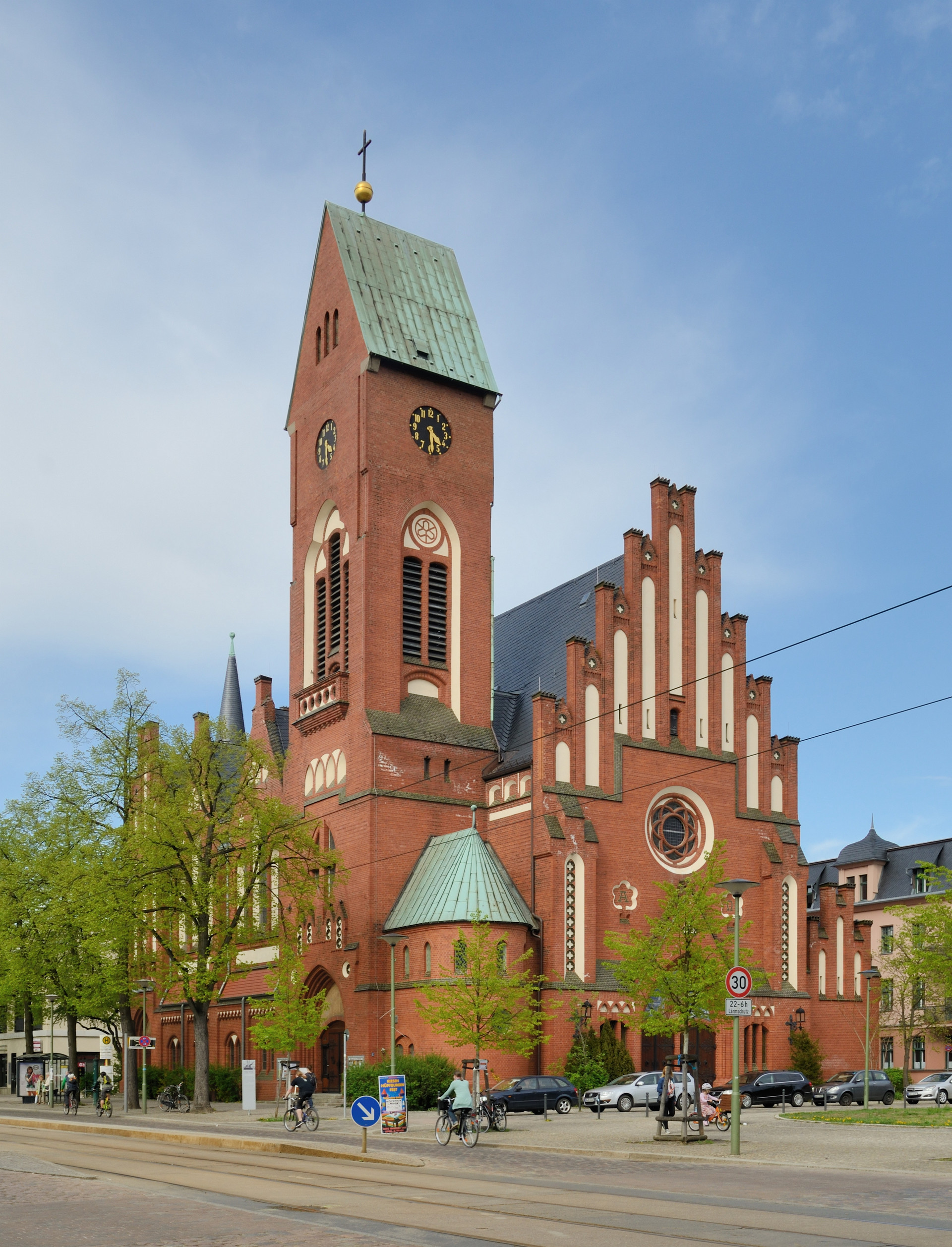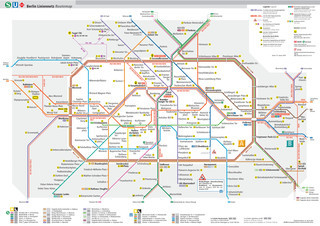Exploring Berlin (1 of 4)
Guten Tag! Today I want to share my experience in Berlin with you all. I had already been to Germany before, visiting a friend who lived in Heidelberg, and also enjoying my holiday in the Black Forest, but I had never been to the German capital and to be honest, I was dying to go.
The truth is that I've never been very lucky or successful when competing in competitions, and I've never won any money in gambling (as you know, unlucky in the game, lucky in love), but my luck changed last summer. I took part in a raffle and the prize was two plane tickets to go to somewhere of your choice in Europe. And yes, I was the happiest person in the world when my name appeared on the list of winners.
Airports
I didn't have to think too much about the destination, and I didn't have to consider who would accompany me: Javier, my boyfriend. We took a German pocket dictionary and warm clothes (we really didn't need them in the end because, it was surprisingly quite hot) and we landed at the Berlin-Schönefeld airport in August.
One of the first things you must know is that if you want to catch the plane to Berlin, the city has three different airports: the Berlin-Schönefeld airport, which is in the south and further from the centre, the Berlin-Tempelhof airport, much more central, and the Berlin-Tegel airport, in the northwest. Normally, people choose to fly to Tempelhof of Tegel. We would have flown to one of those too, but the only option we had was to fly to Schönefeld, so we had to make sure we knew how to use the metro in Berlin to get to the house where we were staying from the airport.
Our accommodation
After doing lots of research online, we managed to rent a room in a student accommodation, at an amazing price. I can honestly say that we wouldn't have had a better time anywhere else, it was a great experience. It wasn't easy to find, and we booked other places which were later cancelled by the hosts. The day of the flight was getting nearer and there was no way of finding a room at a good price. At the last minute, we were lucky enough to find this accommodation (since one of the students was going on holiday for a few days) and we saved quite a lot of money. The house was next to an interesting church, in Friedrichshagen, an area just out of the centre.
In reality, I can't say that the distance was a problem either, because in 20 minutes on the train, we were in the busiest areas in Berlin. In addition, being in a quieter area gave us another advantage, especially on the last day. We were able to relax whilst enjoying a beer and trying the famous delicacy called currywurst next to a splendid lake which was only 5 minutes from the house. Another advantage was that going food shopping, having a drink or eating out was also cheaper than in Berlin. In addition, we were able to cook at home, and dinners turned into a chat and a drink with the other students who lived there.

On the right in the picture, just behind the church, you can see the house we stayed in.

The traditional currywurst
Transport
Berlin is a well-connected city, with different metro lines, train lines and tram lines. In German these correspond to the following names:
Metro = U-Bahn
Train = S-Bahn
Tram = Tram
When you need to get around the city, you have so many options and you can practically get anywhere by using the U-Bahn as well as the S-Bahn. However, getting to grips with the "metro plan" was a real achievement. It's not that it was complicated; the thing was that all the U-Bahn lines and the S-Bahn lines are all put together on the map.
In terms of the quality of the service, the trains work very well, they run quite frequently and they're fast.

Metro plan in Berlin
If you go the source page, you can make the picture bigger and see all the different lines and stations more clearly.
It isn't necessary to be extremely bright or to have good vision to be able to use the map. If we were able to get our heads round it, get around on public transport with no problems, and without getting lost, then so can you. In addition, normally you'll repeat the same journey and you'll end up doing it with your eyes closed. That goes for the stops as well as the transfers (especially since every day, you're always going back to the place where you're staying!) I'll tell you that the main station you'll need to get around the centre and change from one line to another is Friedrichstraße. It's true that some of the incredible places are further out and that you'll need to change routes, but I'll talk about that later on.
Tickets
Another important thing you must take into account when using public transport is the tickets. Single tickets are expensive, and bearing in mind there are 3 zones, A, B and C it's more expensive the further you travel. The whole centre of Berlin is in zone A, so you'll only have to buy tickets for zone A-B or A-B-C if your accommodation is in zone B or C. There are also tickets which last X days and you can use them as many times as you like once you've validated it. For example, we bought a ticket to last for the duration of 7 days for zones A-B-C for less than 40 euros. Given that we were staying in a house in zone B, we had to get there from the Berlin-Schönefeld airport (in zone C), and also we had planned on visiting the Saschenhausen concentration camp (in zone C) as well as the city of Potsdam (also in zone C) so it was a lot cheaper that way. Just to note, for those who are thinking of travelling to the Berlin-Tegel airport, it's in zone B, but you can always buy your X day tickets for just zone A, and buy single tickets for zone B for journeys to and from the airport. The Berlin-Tempelhof airport is in zone A and it's the cheapest option, although it's likely that it will cost more to fly to there.
Staying on the subject of tickets, I will warn you that there are no turnstiles to pass through in the stations in Berlin. Once you're on the platform, you have to find a machine where you insert your ticket and it will stamp a date on it. That's how you validate it on the same day. We had no idea about that, and we got on the train, with our weekly pass, happier than ever. Once we got to our destination, one of the girls who lived in the house explained the whole process to us and said we were so lucky not to have been found by a ticket inspector. It really surprised her in fact.
Basically, in Berlin there are ticket inspectors on the trains and the metro (it's not a tale). In fact, it's common to bump into one at any point of the journey. Another thing to bear in mind is that the ticket inspectors aren't usually lenient, they don't care if you're a tourist, if you don't understand or they can't understand you. If they catch you without a ticket, or with an invalidated ticket, or even with a ticket which has been validated several times (you can only put the ticket into the machine the first time you use it; if not, the arrows which appear on the ticket overlap each time you validate it and it makes it illegible and therefore invalid), you'll have to pay a fine. I guess you'll receive a letter or you'll have to pay it there and then; I think I remember it being around 40 or 60 euros, so don't be difficult and be honest, you'll save yourself the hassle and your pocket will be grateful.
Map with the main attractions
Here's a map with all the most important monuments in Berlin. Some of these I'll talk about in my next posts, telling you about my experience and trying to give as much information which could be useful for future travellers:

Tourist map of Berlin
Again, you can make this map bigger and read it more easily if you go onto the source website.
One last point on transport. Did you know the bus line number 100 runs through all the main areas of interest? It's almost as if it's a tourist bus but much cheaper. In addition, it's a double-decker, like the ones in the United Kingdom.
Take a look at my next posts on this fascinating city, see you!
Photo gallery
Content available in other languages
- Español: Descubriendo Berlín (1/4)
- Italiano: Alla scoperta di Berlino (1/4)
- Français: À la découverte de Berlin (1/4)
Want to have your own Erasmus blog?
If you are experiencing living abroad, you're an avid traveller or want to promote the city where you live... create your own blog and share your adventures!
I want to create my Erasmus blog! →



















Comments (0 comments)